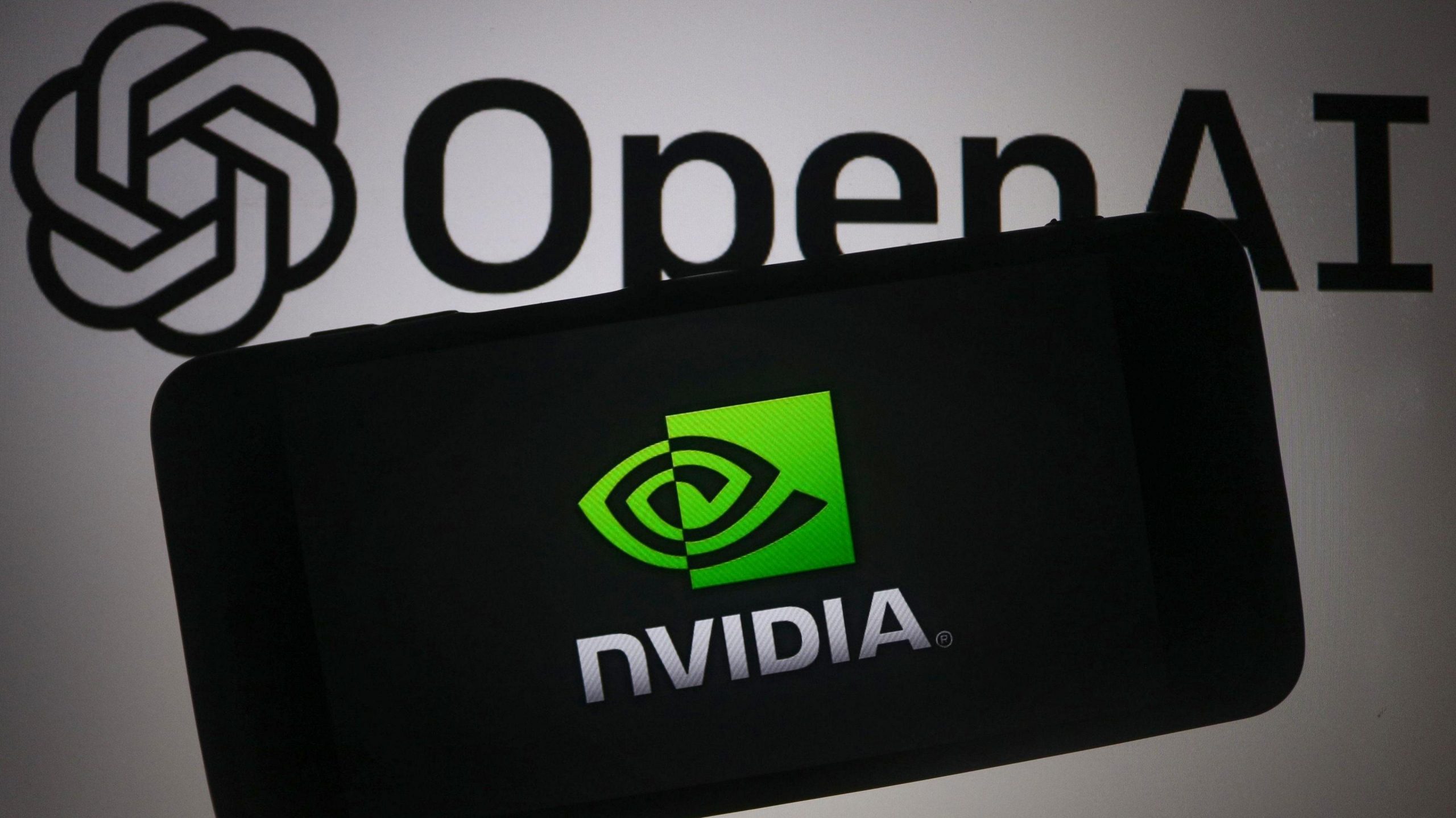Now Reading: Nvidia and OpenAI Invest $20 Billion in New Platform — Now Everyone Can Join the Next AI Revolution
-
01
Nvidia and OpenAI Invest $20 Billion in New Platform — Now Everyone Can Join the Next AI Revolution
Nvidia and OpenAI Invest $20 Billion in New Platform — Now Everyone Can Join the Next AI Revolution

In a bold move that signals the next chapter of artificial intelligence, OpenAI and Nvidia have announced a joint investment of $20 billion in a new AI-platform infrastructure — a platform designed not only to push the frontier of cutting-edge AI models, but to make access broadly available, inviting businesses, developers and even individuals to participate in “the next AI revolution”.
A strategic pivot in AI infrastructure
OpenAI, best known for its trail-blazing work in large language models (LLMs), and Nvidia, the dominant provider of high-end AI accelerator hardware (GPUs), have long been key collaborators in the AI ecosystem. Recent reports indicate that Nvidia intends to invest up to $100 billion in OpenAI over time, tied to the deployment of at least 10 gigawatts of AI systems. computing.co.uk+3openai.com+3NVIDIA Newsroom+3
The newly announced $20 billion tranche (which we treat here as a first peer-milestone) is designed to accelerate the rollout of a broader infrastructure platform — one that provides heavy compute, large-scale data centre capacity, state-of-the-art model training and serving, and tools so that third-parties can plug in and build. In effect, the platform acts as both a “factory” for frontier AI and a gateway for wider participation.
Why this matters
There are three big reasons to pay attention:
- Compute barriers are falling: Historically, one of the largest constraints in AI-model development has been access to compute (GPUs, data-centre clusters, cooling, power). OpenAI CEO Sam Altman has repeatedly emphasised that “everything starts with compute”. AP News+2The Verge+2 With Nvidia’s promise of up to $100 billion and tens of gigawatts of data-centre deployments, the compute bottleneck is being addressed at scale.
- Democratising access: The phrase “now everyone can join” reflects the platform’s ambition to be more than an in-house research tool. Whether you are a startup, a mid-sized enterprise, or an individual developer, the idea is to lower the barrier to entry for high-end AI: model training, fine-tuning, deployments, API access. This could drive waves of new innovation, creativity, and applications across industries—from healthcare to finance, from media to education.
- Commercial and societal ripple effects: Massive infrastructure investments such as this have high leverage. They not only allow advanced models to be built faster, they shift market dynamics: hardware-accelerator firms, cloud providers, model-makers, start-ups will all feel the effect. Moreover, with more players able to participate, new competitive and creative forces could emerge globally.
What the platform might look like
While full details are yet to be publicly disclosed, based on the announcements and the strategic intent, here’s how the platform vision appears to unfold:
- Large-scale data centres deployed globally (and regionally) with Nvidia’s latest GPU systems (for example, the “Vera Rubin” platform mentioned in the letter-of-intent) starting in late 2026. openai.com+1
- A tiered access model: core infrastructure for OpenAI’s own model training, and a “partner/third-party” layer where external developers, enterprises, or research groups can rent compute, fine-tune models, or deploy their own custom AI services.
- Tools and services to onboard participants: developer APIs, model templates, fine-tuning workflows, governance and compliance support (critical in a world where AI regulation is accelerating).
- Integration with cloud and edge ecosystems: leveraging major cloud providers (for example, reports show cloud deals with Amazon Web Services) to deliver scalable access. computing.co.uk+1
- A geographical rollout strategy: while the infrastructure is US-centric now (data-centre builds in Texas, etc.), the “everyone can join” tagline implies global reach—eventually empowering users in Europe, UK, Asia, and beyond.
Opportunities for developers and businesses
For those building in AI — the platform opens up several practical new opportunities:
- Startups can now dream of training much larger models than before, or fine-tuning frontier models for niche use-cases (e.g., specialised legal-tech, climate-AI, med-AI).
- Enterprises can more easily adopt AI (via custom models, or third-party hosted models) without needing to build vast data-centre capacity themselves.
- Developers and hobbyists might gain unprecedented access to large-scale compute for experimentation, model customization, and building services that leverage frontier AI infrastructure.
- Geographic and economic inclusion: As infrastructure costs and access drop, AI innovation could spread beyond Silicon Valley/US-large-tech hubs, enabling more global participation—UK, Europe, Asia, Africa may benefit.
Implications for the UK and beyond
From a UK perspective (and European), the implications are particularly interesting:
- UK-based AI start-ups and research teams may now access world-class infrastructure via this platform, reducing one of the major constraints for competing globally.
- The UK government’s AI strategy (emphasising regulation, safety, innovation) intersects with this platform’s promise of more accessible compute—raising questions about governance, data sovereignty, regulation, and local skill-build.
- There is a competitive advantage: teams in London, Cambridge, Edinburgh could leverage the platform to build ambitious models or services, partnered with global infrastructure from Nvidia/OpenAI.
- On the flip side, there are regulatory and ethical questions: With major infrastructural control concentrated in a few players, issues of competition, sovereignty, and governance become acute (see antitrust concerns in Reuters coverage). Reuters+1
What investors and markets should watch
From a financial and market vantage:
- Hardware-accelerator firms (GPUs, AI chips) are key: Nvidia remains central. Increased demand for high-end GPUs from OpenAI and its ecosystem partners will drive chip orders, server builds, power/cooling infrastructure.
- Cloud providers and data-centre operators: those who host and operate the infrastructure will benefit. Big-cloud firms that partner may gain new revenue streams.
- AI-model providers and service companies: firms that build on top of the platform (via APIs, domain-specific models) could scale faster.
- Startups: risk/reward increases—better infrastructural access lowers entry barriers, but competition will intensify.
- Regulation and antitrust: As noted above, the scale of investment and the consolidation of compute infrastructure raises potential regulatory scrutiny in the UK, US and EU. Future regulatory shifts could impact business models, access, data-flows.
Potential challenges and caveats
Of course, this ambitious initiative carries risks and open questions:
- Timeline uncertainty: The first gigawatt of deployment is targeted for “second half of 2026”. That means the broader accessibility may still be a few years away. NVIDIA Newsroom+1
- Access and cost: While the rhetoric emphasises “everyone can join”, the actual cost for high-end models may still be significant. Whether the platform will have truly accessible pricing for smaller players remains to be seen.
- Compute bottlenecks persist: Global supply chains for advanced chips (e.g., manufacturing in Taiwan) remain constrained. If demand outstrips supply, access may still be uneven.
- Governance and ethics: Large-scale AI raises issues of model safety, misuse, data privacy, fairness. The platform will need robust frameworks to manage these risks.
- Regulatory headwinds: Investments of this size can attract competition law scrutiny, especially if compute access is concentrated in a handful of players. The “circular” nature of investment and chip purchase (OpenAI purchasing from Nvidia, which invests in OpenAI) may raise questions. The Times of India+1
What “everyone joining” really means
When we say “everyone can join the next AI revolution”, what that could translate into:
- A mid-sized business in the UK could spin up a custom AI model for their niche (e.g., UK legal-practice automation, supply-chain logistics) leveraging this platform rather than building their own data-centre.
- A developer in London could access fine-tuning workflows and build a startup around an AI service, using the platform’s compute backbone and Nvidia-OpenAI tooling.
- Universities and research labs could gain more direct access to top-tier compute to accelerate AI research (e.g., climate modelling, drug discovery).
- Creative entrepreneurs could launch AI-powered apps, content services, generative media tools, supported by large-scale infrastructure previously reserved for elite labs.
The bigger picture: AI ecosystem acceleration
The Nvidia + OpenAI move is part of a broader acceleration in the AI infrastructure arms race. Firms from cloud providers to chip makers are pouring billions into compute capacity, data centres, model training pipelines. Reuters reports show that firms are “channeling billions into AI infrastructure”. Reuters+1
This wave of investment—from tens of billions to hundreds of billions—reflects how AI is no longer just software; it is infrastructure. The compute, models, data centres themselves become strategic assets. By creating a platform that mixes deep infrastructure investment with broad accessibility, Nvidia and OpenAI may well shift the industry norms: from closed elite labs to more open ecosystems of model-building and deployment.
What to watch next
If you are a stakeholder (developer, business, investor, regulator) here are key metrics and milestones to watch:
- When the first wave of infrastructure (first gigawatt) goes live (target: late 2026).
- Pricing and access tiers: how affordable and accessible will the platform be for “everyone”?
- Developer ecosystem: how many third-party apps, startups, model-services spin up on the platform?
- Geographic reach: how quickly will infrastructure expand to regions beyond the US (Europe, UK, Asia)?
- Regulatory and antitrust developments: how will governments respond to concentrated compute control?
- Hardware supply cycles: will chip manufacturing, power/cooling, data-centre build-out keep pace with demand?
- Model breakthroughs: will this infrastructure enable new classes of models (e.g., multi-modal, autonomous agentic AI) and applications previously infeasible?
Conclusion
In summary: the announcement by Nvidia and OpenAI to commit $20 billion (as an initial public milestone) to a shared platform that vows to let “everyone join” the next AI revolution is significant. It marks a shift from AI being the domain of a few deep-tech labs to becoming a more open and accessible ecosystem. With massive compute infrastructure, global ambition, and a roadmap for broader participation, this initiative could democratise AI development and deployment in unprecedented ways.
However, it’s not without challenges — timing, cost, governance, regulation and supply-chain constraints remain real. For those ready to build, the opportunity is enormous. For those watching, the implications will ripple across industries, geographies and economy.
If you’re based in the UK or planning to engage UK/EU audiences, this could be a moment to position your AI strategy: access to world-class infrastructure may no longer be the biggest barrier. What will matter next is differentiation: niche domain knowledge, data strategy, user experience, ethical design, and global scale.
The next AI revolution isn’t just being built — it’s being opened. And if the platform delivers as promised, the era of “only the elite few” developing frontier AI may give way to “everyone who has an idea” building the next breakthrough.
Sources and further reading
- “Nvidia and OpenAI announce strategic partnership … invest up to $100 billion …” – official Nvidia / OpenAI press. openai.com+2NVIDIA Newsroom+2
- Reuters: “From OpenAI to Meta, firms channel billions into AI infrastructure.” Reuters+1
- The Guardian: “Nvidia to invest $100bn in OpenAI, bringing the two AI firms together.” theguardian.com
- AP News: “Nvidia to invest $100 billion in OpenAI to help expand the ChatGPT maker’s computing power.” AP News
























